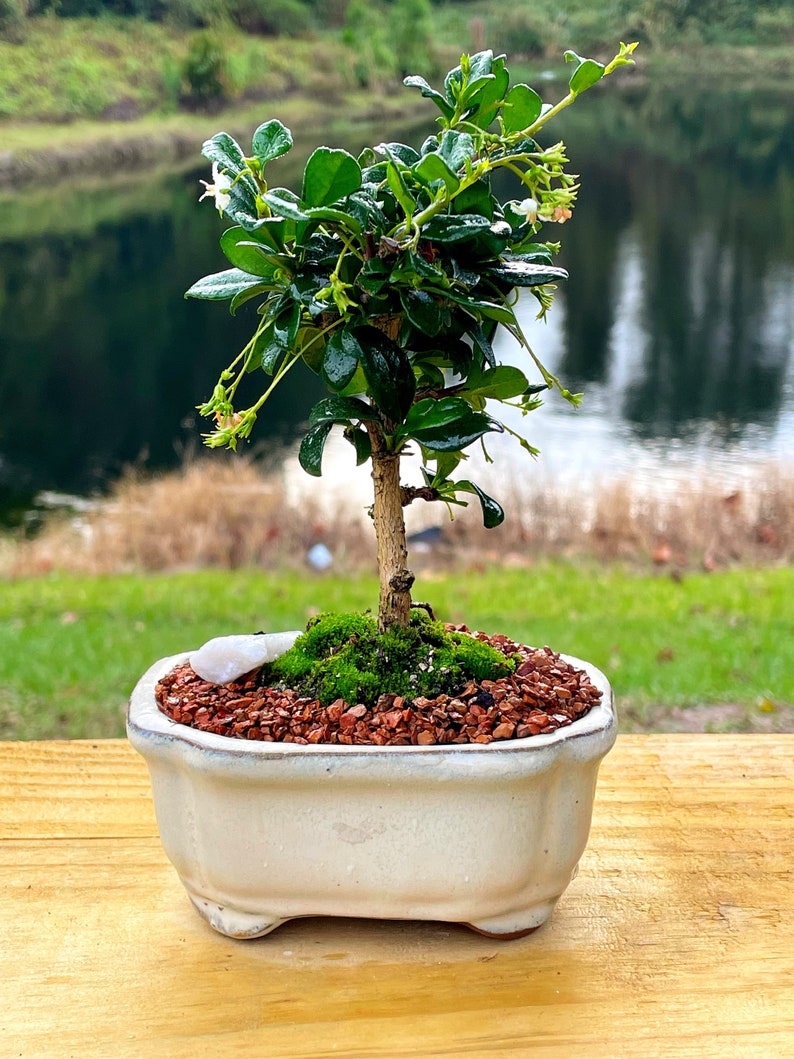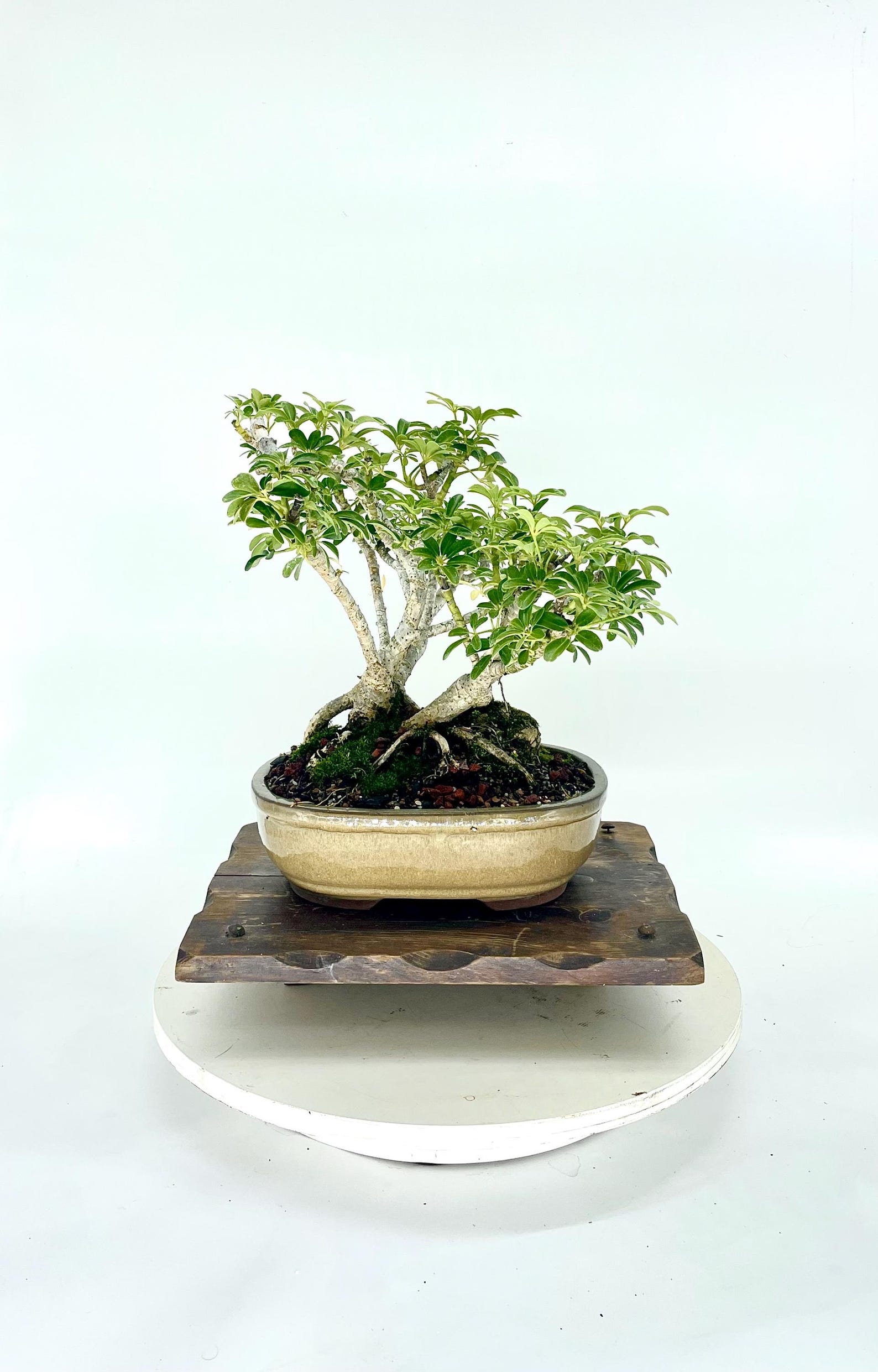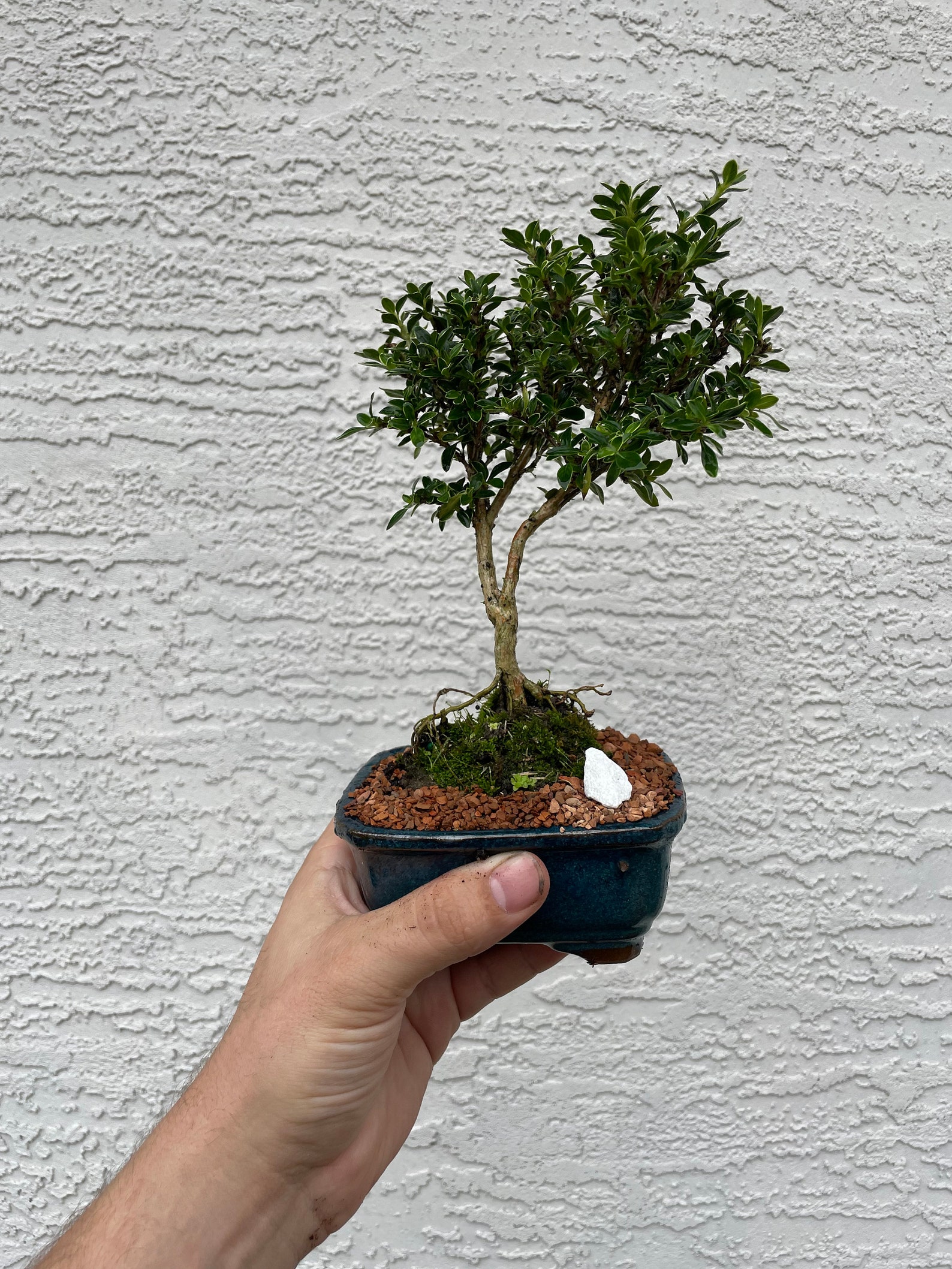A Bonsai tree can truly brighten up your home, whether or not you have other plants. These tiny trees are like living art pieces. They make your space feel peaceful and nice.
But here’s the thing: not all Bonsai trees love living indoors. Some do better outside. Plus, to keep them looking like Bonsai, they need regular trimming and shaping.
Thinking about getting a Bonsai for yourself or as a gift? I’ve got a list of the top indoor Bonsai trees you might like. They’re perfect for bringing a touch of nature inside.
- Related article: How to Grow Bonsais
7 Key Takeaways on the Best Indoor Bonsai Trees
- Indoor bonsai trees can enhance home décor with their living sculpture-like appearance.
- Ficus Bonsai and Chinese Elm are excellent choices for beginners due to their resilience and ease of care.
- Proper soil mix for indoor bonsai should include pumice, lava rock, and akadama for optimal drainage and aeration.
- Indoor bonsai trees need plenty of light, ideally from a south-facing window or full-spectrum fluorescent bulbs.
- Humidity and consistent watering are crucial for maintaining healthy indoor bonsai trees.
- Repotting should be done when roots are visible or growth slows, typically every two to five years depending on the tree’s age.
- Regular pruning and careful shaping help maintain the bonsai’s miniature form and overall health.
Best Indoor Bonsai Trees
There are many varieties of Bonsai trees. Just about any species can be pruned into a bonsai tree, but there are undoubtedly some species that do better indoors than others.
Here are the top nine bonsai trees to grow indoors.
1. Ficus Bonsai
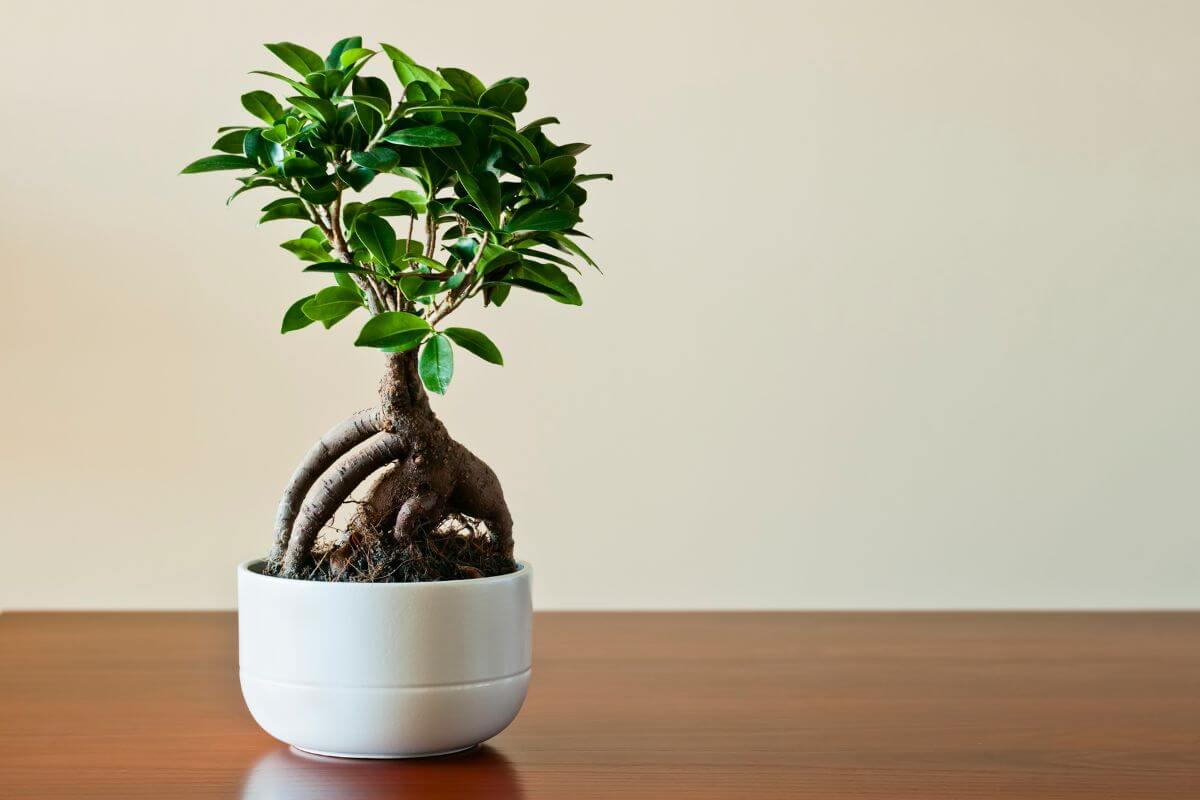
Ficus Bonsai trees are perfect if you’re just starting with bonsai. They’re tough and can handle a lot. There are different types, like Ficus retusa, Ficus benjamina, and Ginseng Ficus.
These trees have bright green leaves and strong trunks. The Ginseng Ficus is special because its base is thick and twisted, looking like a ginseng root. Other types of Ficus have their unique shapes and leaf designs.
One great thing about Ficus Bonsai is that they don’t mind if you forget to water them sometimes. They also do well in places with little light and low humidity. You can easily shape and trim them, which gives you a lot of options for how they look.
- Read more about Bonsai Watering Frequency
If you’re looking for a bonsai that is easy to care for and has a lot of character, a Ficus Bonsai is a great choice.
2. Fukien Tea (Carmona retusa)
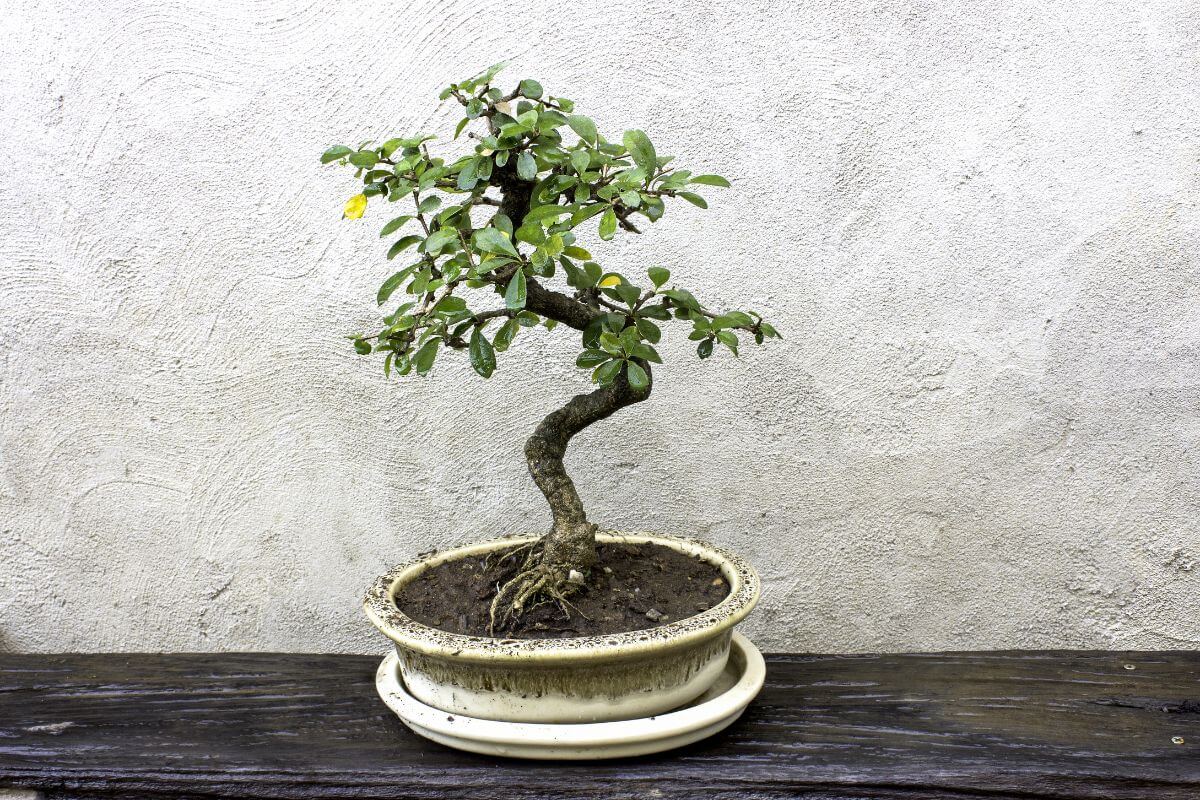
The Fukien Tea Bonsai, or Carmona, makes a lovely indoor tree. It’s special for its small white flowers and red berries. You’ll notice its dark green, shiny leaves dotted with tiny white spots.
This bonsai loves warm, bright places and needs a lot of humidity to stay happy. Keep its environment warm and water it regularly to keep it healthy.
You can shape its naturally twisted trunk and branches with careful pruning. Even though it needs a bit more attention, the Fukien Tea Bonsai is loved for its flowers that last all year and its delightful look.
3. Chinese Elm (Ulmus parvifolium)
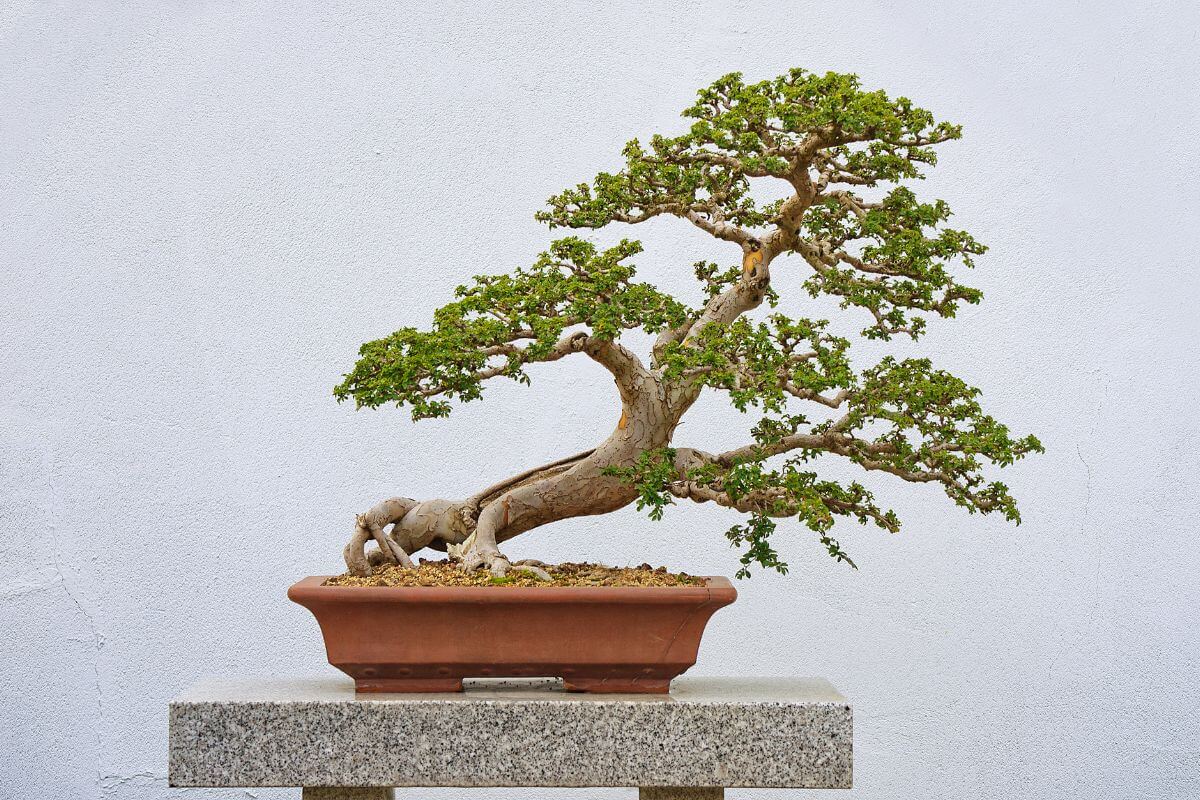
The Chinese Elm is a go-to tree for those just starting with bonsai. Why? It’s tough and doesn’t need much to stay healthy. This tree shows off small, jagged leaves that turn a bright yellow in fall and has a lovely way its branches spread out.
What I love about the Chinese Elm is how well it handles different indoor spots. Whether it’s low or bright light or varying humidity, this tree adapts. Plus, it grows fast, which is perfect if you like to trim and shape your bonsai often.
The best part? The Chinese Elm is super resilient. It does well even if you don’t fuss over it too much. This makes it a great pick for anyone who loves bonsai. It’s not just easy to care for but also really beautiful.
4. Hawaiian Umbrella (Schefflera)
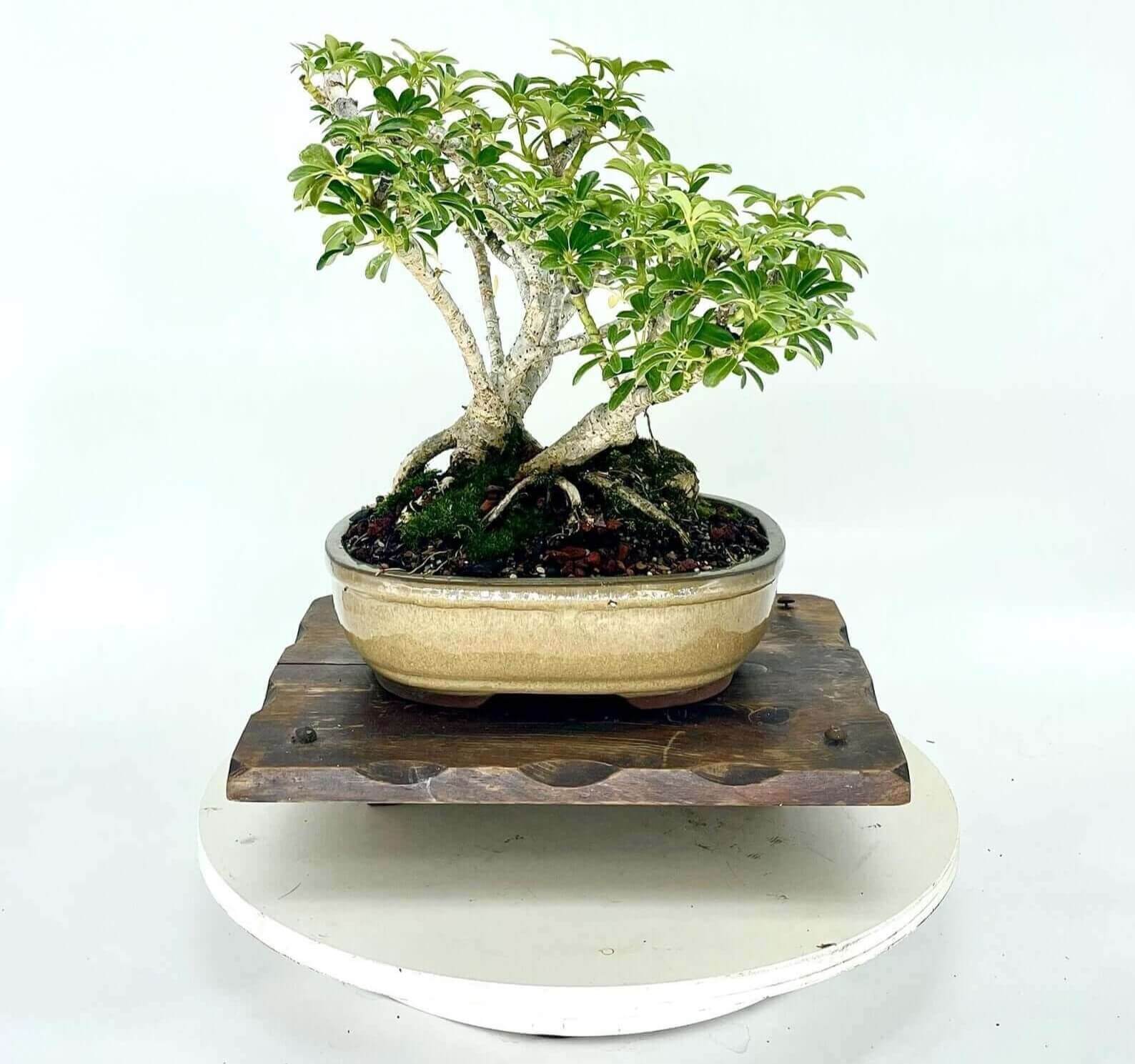
The Hawaiian Umbrella Bonsai, or Schefflera, stands out with its unique, umbrella-shaped clusters of shiny leaves. What I love about this bonsai is how it thrives even in low light and humidity.
It has a thick, strong trunk and can grow aerial roots, giving it an exotic appearance. Even though it doesn’t take traditional wiring well, you can prune it to keep its shape.
Taking care of the Hawaiian Umbrella is pretty easy. It needs regular watering and some misting now and then. Its distinct look and simple care routine make it a top choice for those of us who love indoor bonsai.
5. Dwarf Jade (Portulacaria afra)
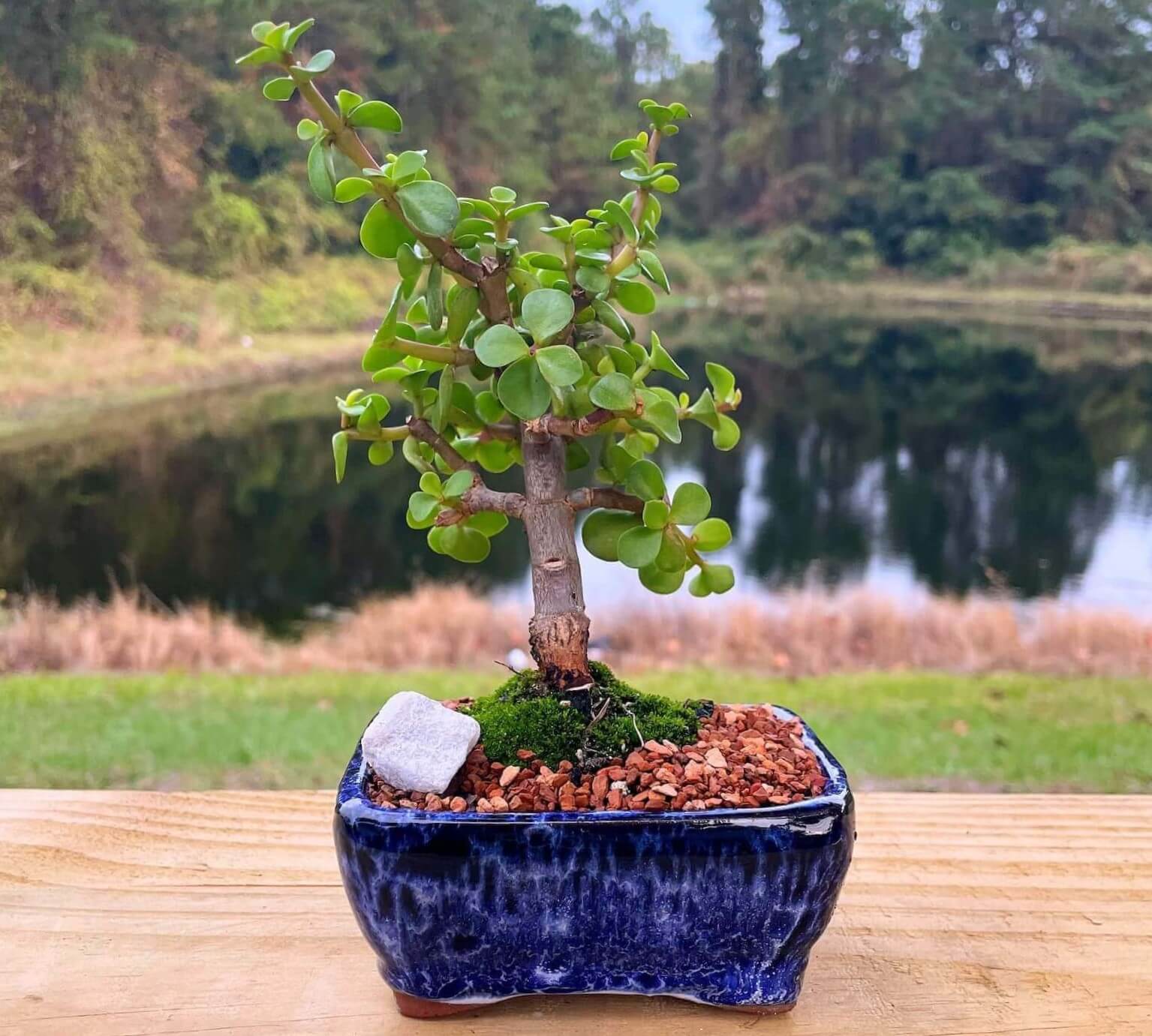
The Dwarf Jade Bonsai, or Elephant Bush, is a succulent that thrives indoors. It features small, round leaves that store water, making it highly drought-resistant.
The tree has a thick, woody trunk with a reddish-brown hue, adding to its robust appearance. It requires minimal watering and does well in bright, indirect light.
The Dwarf Jade’s resilience and easy care make it an ideal tree for beginners. It can be pruned and shaped easily, allowing for creative bonsai designs.
This unique bonsai’s drought tolerance and distinctive characteristics make it a standout choice for any indoor collection.
6. Ponytail Palm (Beaucarnea recurvata)
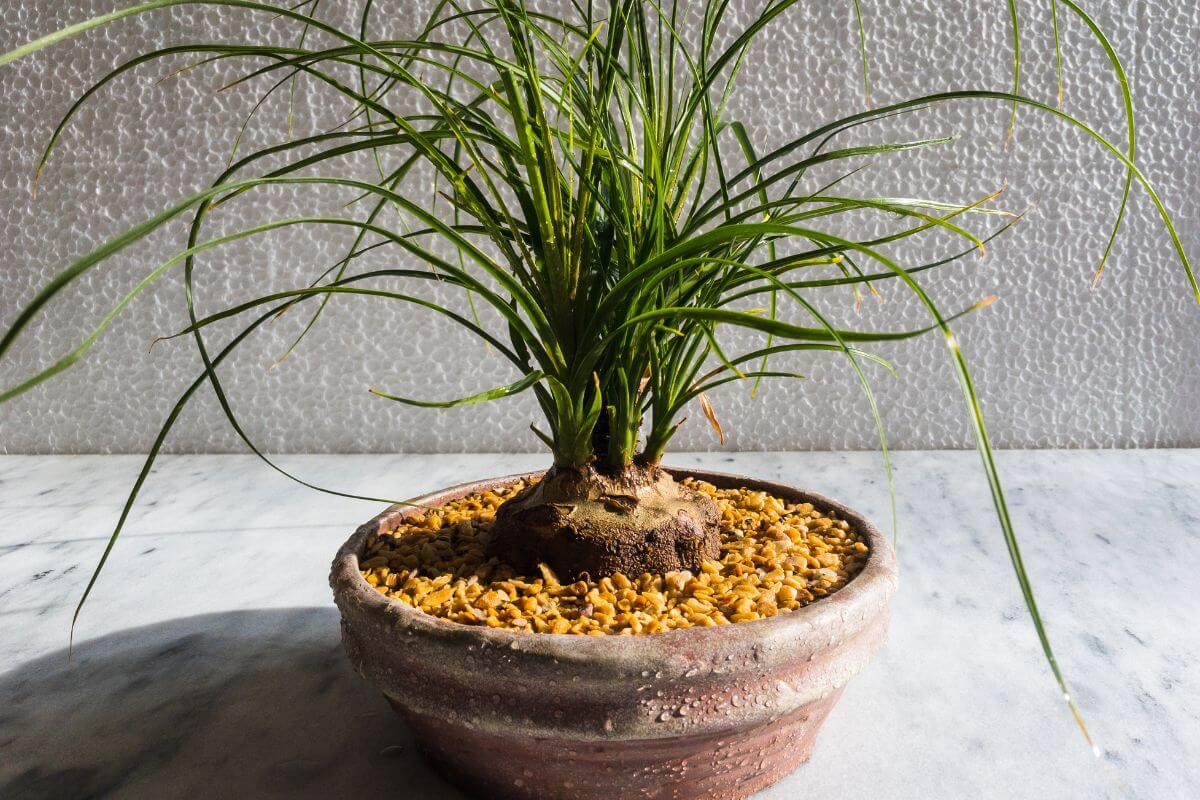
The Ponytail Palm Bonsai is known for its unique bulbous trunk that stores water, making it highly drought-resistant. The long, arching leaves resemble a ponytail, giving it a distinctive look.
It thrives in bright light and tolerates lower humidity, making it suitable for indoor environments. The thick, textured trunk adds to its visual appeal.
The Ponytail Palm requires minimal watering and is relatively low-maintenance. Its slow growth and unusual form make it a popular tree for beginners.
7. Sweet Plum (Sageretia theezans)
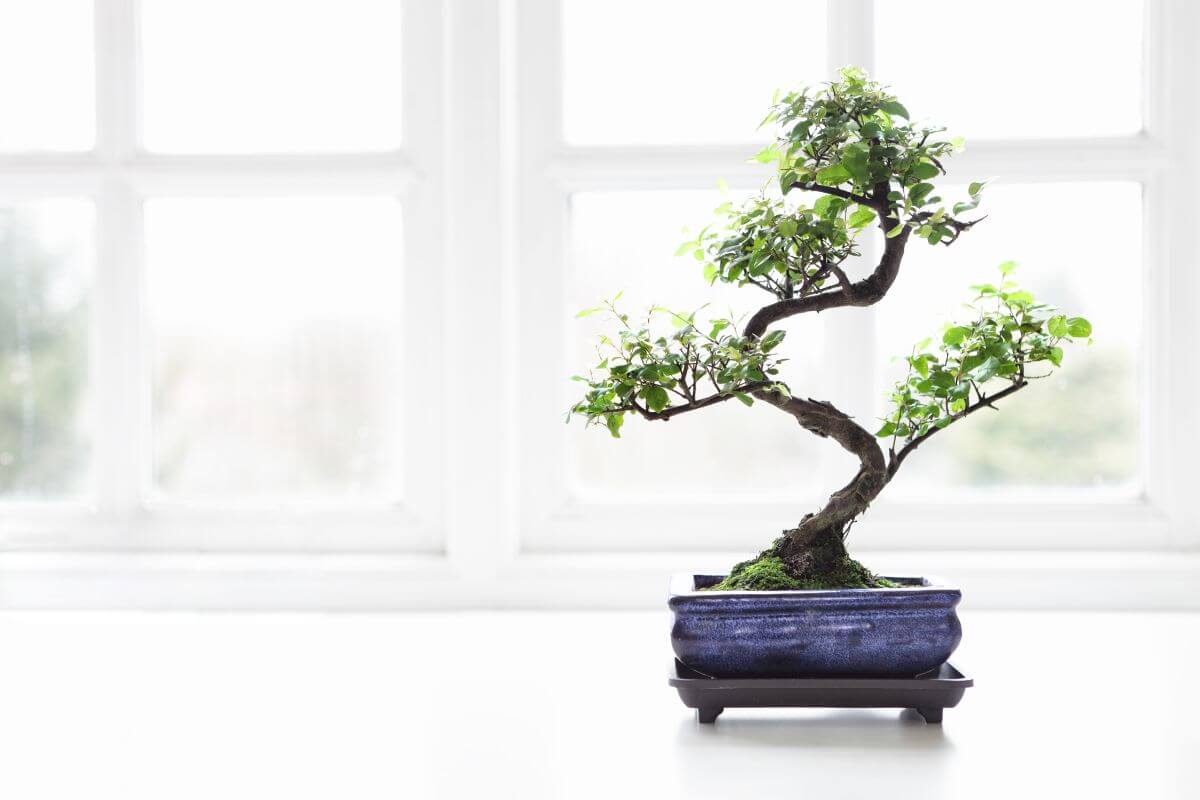
The Sweet Plum Bonsai is charming with its small, glossy leaves and delicate white flowers. Its smooth, reddish-brown bark peels to reveal lighter hues, enhancing its ornamental value.
This tree thrives in bright, indirect light and needs regular watering to maintain lush foliage. It is easy to shape and prune, making it a suitable tree for beginners.
The Sweet Plum’s ability to produce flowers and small fruits adds to its appeal. Its attractive appearance and manageable care requirements make it a delightful choice for indoor bonsai.
8. Olive Bonsai (Olea europaea)
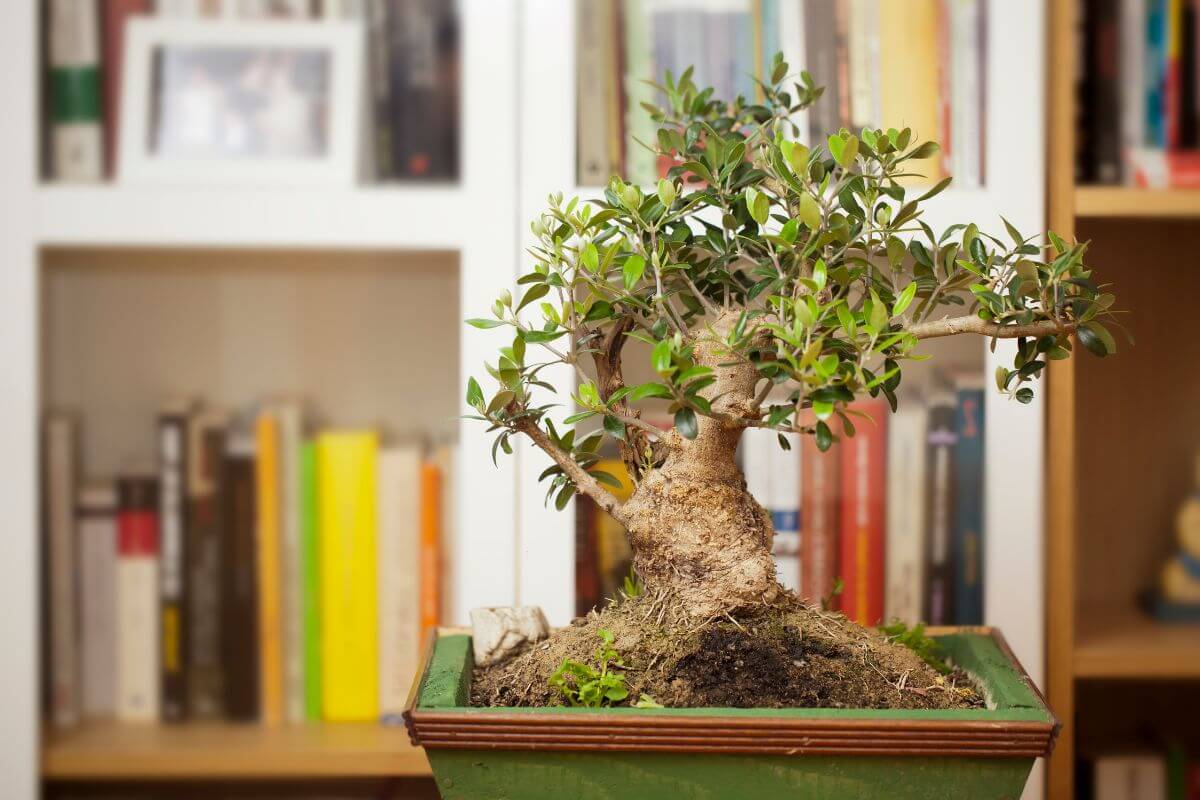
The Olive Bonsai is a hardy indoor tree with small, silver-green leaves and a gnarled trunk that adds a rugged, ancient look. It thrives in bright light and can handle lower humidity levels. The tree requires regular watering but can tolerate short periods of drought.
The Olive Bonsai’s resilience and unique appearance make it a popular choice for indoor cultivation. It adds a touch of Mediterranean charm to any space.
9. Serissa (Serissa foetida)
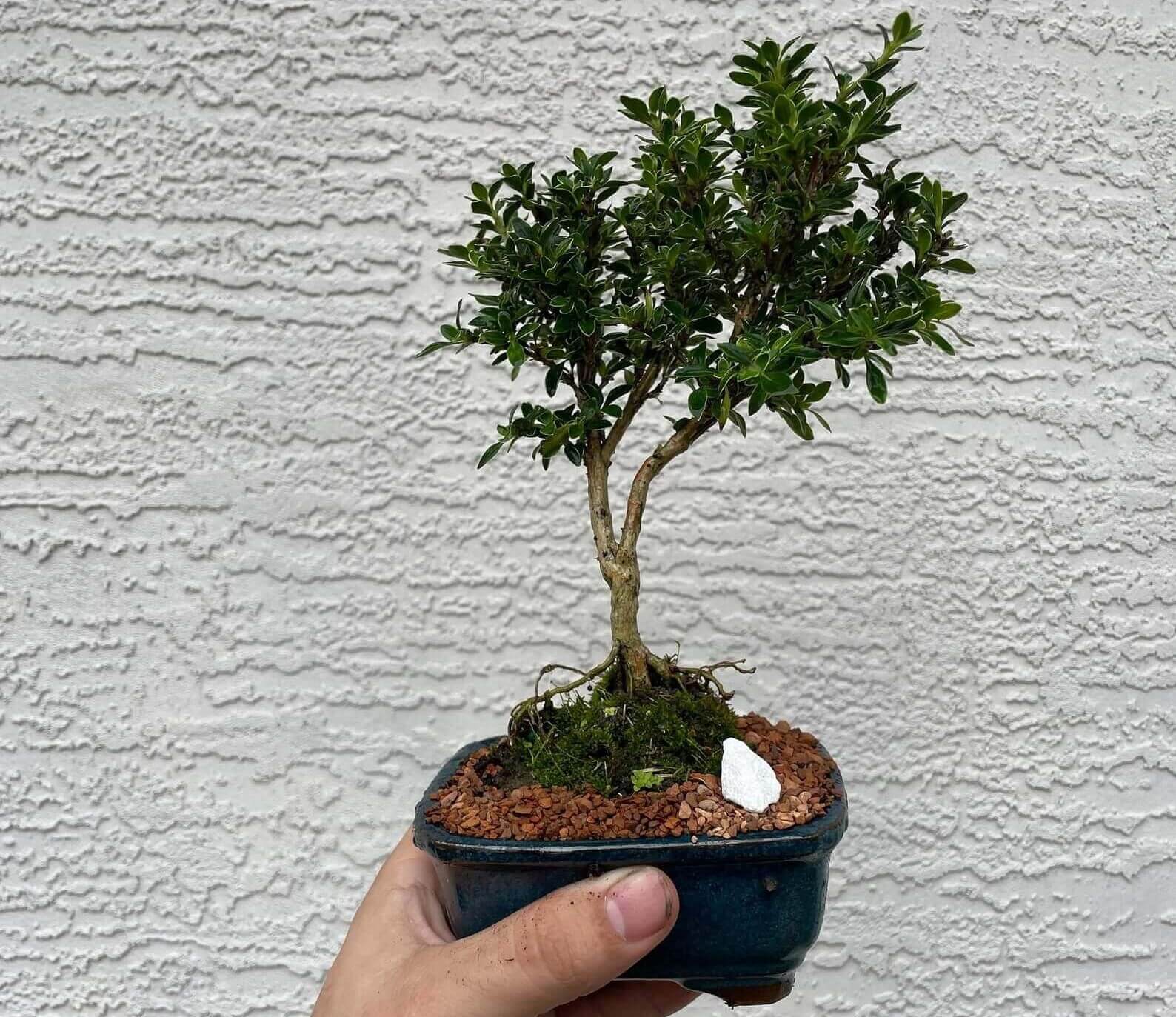
The Serissa Bonsai, or Tree of a Thousand Stars, is known for its small, white flowers that bloom throughout the year. It has tiny, dark green leaves that contrast beautifully with its delicate blooms.
This bonsai requires bright, indirect light and consistent humidity. It needs regular watering and can be shaped through careful pruning. The Serissa’s continuous bloom and intricate branching structure make it a rewarding bonsai to grow.
- Read more: How Long Will It Take to Grow Bonsais?
Indoor Bonsai Tree Care Guide
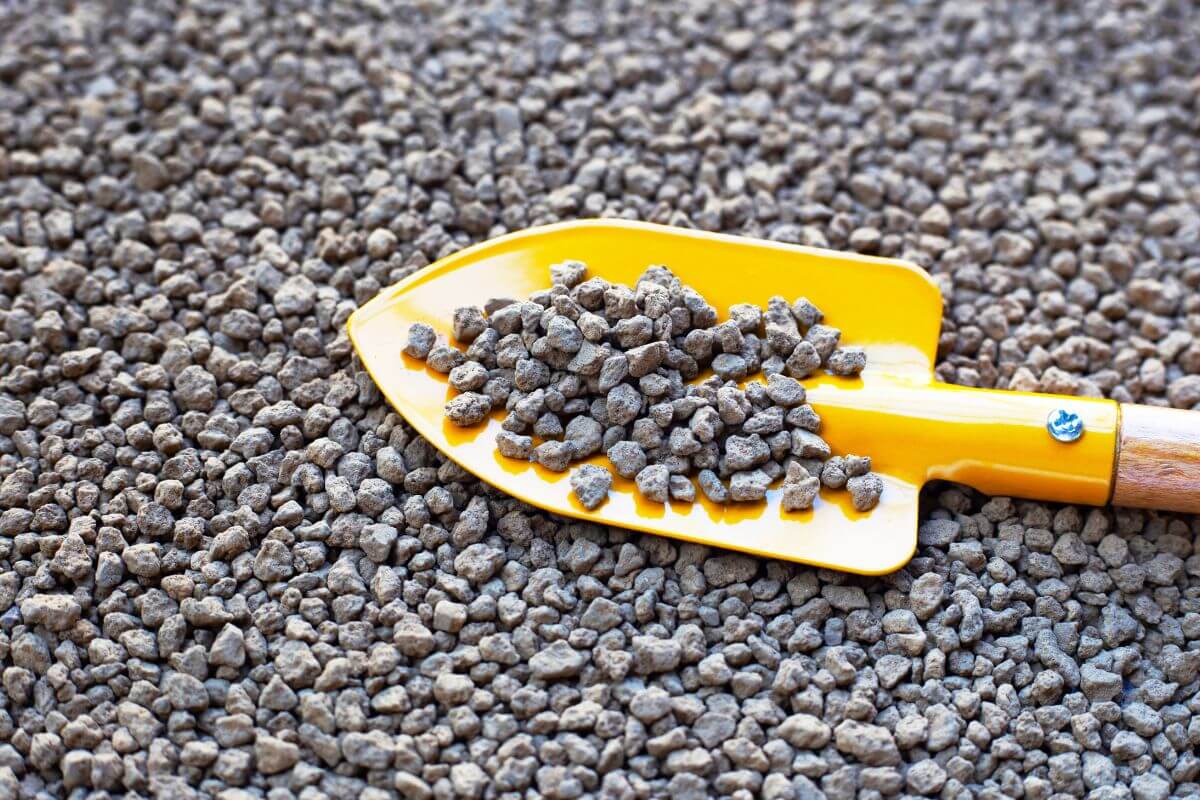
Taking care of indoor bonsai trees is pretty similar to looking after outdoor ones. With the right attention, your indoor bonsai will stay small and healthy for a long time. You can even pass it down to your great-grandchildren.
Let’s take a look at how it’s done in this table.
| Aspect | Details |
|---|---|
| Soil | Pumice – Retains moisture and allows air circulation. Lava Rock – Enhances drainage and maintains soil structure. Akadama – Offers some nutrient retention but should be used sparingly. |
| Light | Place near a south-facing window for maximum sunlight. Use full-spectrum fluorescent lighting if natural light is insufficient. Lights should be 6-12 inches above and on for 12-16 hours daily. |
| Temperature | Use a humidity tray or plant humidifier. Water when the soil is slightly dry. Ensure good drainage to prevent waterlogging. |
| Water and Humidity | Use a humidity tray or plant humidifier. Water when soil is slightly dry. Ensure good drainage to prevent waterlogging. |
| Repotting | Repot younger trees every 2 years — older trees every 3-5 years. Repot when roots appear at the soil surface. |
| Propagation | The Sashiki method: Cut a healthy branch (2-4 inches) at a 45-degree angle. Remove lower leaves, and dip in rooting hormone. Insert into pre-moistened soil and cover with a plastic bag. Mist regularly and keep the soil moist. |
| Typical Problems | Symptoms: Brittle leaves – Underwatering. Dropping leaves – Overfertilization. Wilted leaves – Insufficient sunlight. Yellow leaves – Overwatering or too much sunlight. |
| Typical Pests | Look for ragged leaf edges, holes, eggs/webs, or actual pests. Aphids, mealybugs, spider mites, and weevils |
Best Indoor Bonsai Trees Final Thoughts
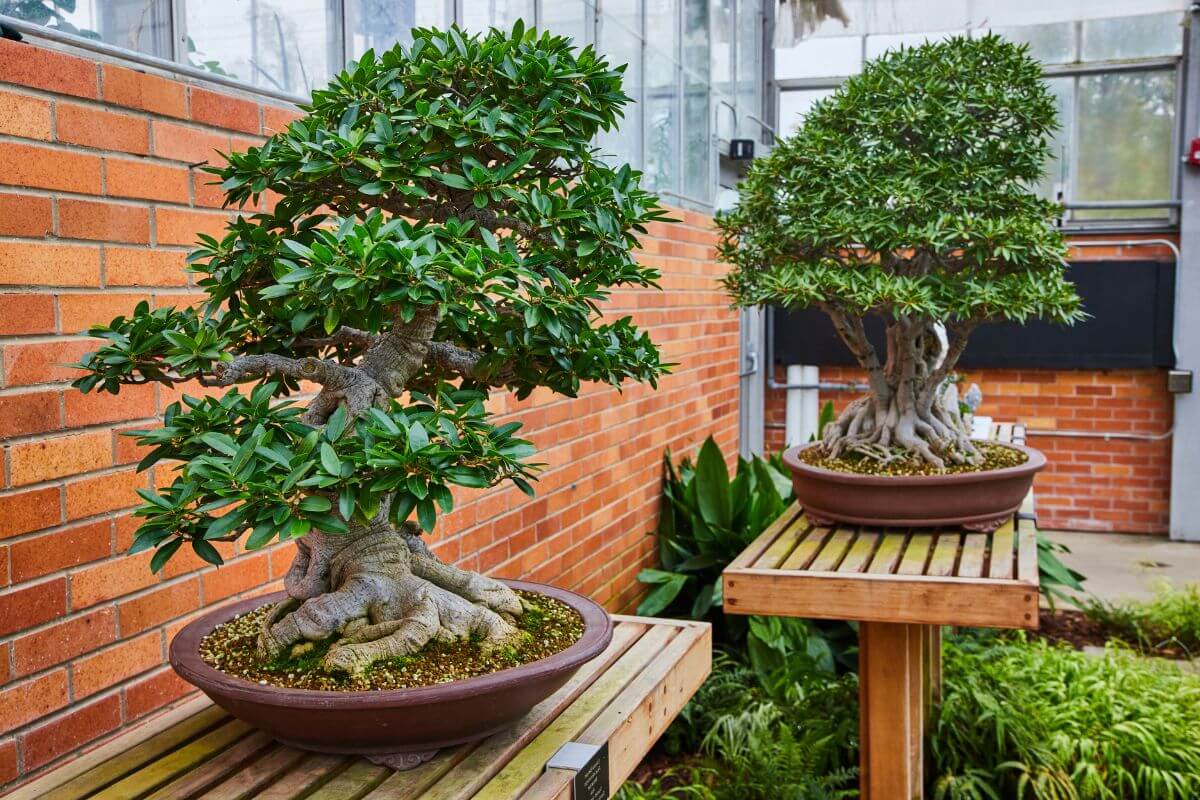
Caring for your Bonsai tree in indoor environments can be a truly rewarding experience for any bonsai beginner. You’ll find it gratifying and relaxing.
Each tree has unique characteristics, with green leaves and some flower blooms. Many are easy to train into beautiful bonsai designs.
When selecting your Bonsai make sure to choose a healthy tree and select the right tree species for your level of bonsai training. Choose a hardy tree that will survive if you make a few mistakes along the way.
For more about caring for and growing bonsai trees, check these articles out:
Best Indoor Bonsai Trees FAQs
1. What Are the Best Indoor Bonsai Trees for Beginners?
For beginners, the Ficus Bonsai, Chinese Elm, and Dwarf Jade are excellent choices. They are hardy, adaptable, and relatively easy to care for, making them ideal for those new to bonsai cultivation.
2. How Often Should I Water My Indoor Bonsai Tree?
Water your bonsai tree when the soil feels slightly dry to the touch. Avoid following a strict schedule; instead, check the soil moisture regularly. Overwatering can lead to root rot, while underwatering can cause stress to the tree.
3. What Type of Soil Is Best for Indoor Bonsai Trees?
A suitable bonsai soil mix should include pumice for moisture retention, lava rock for drainage, and akadama for some nutrient retention. This combination ensures good aeration and prevents root rot.
4. How Much Light Does an Indoor Bonsai Tree Need?
Indoor bonsai trees thrive with plenty of light. Ideally, place your bonsai near a south-facing window for several hours of direct light each day. If natural light is insufficient, use full-spectrum fluorescent lighting to supplement.
5. How Do I Know When to Repot My Indoor Bonsai Tree?
Repot your bonsai when roots start to emerge from the soil or the tree’s growth slows. Younger trees typically need repotting every two years, while older trees can be repotted every three to five years, depending on their growth rate.
Learn more about bonsai trees through these interesting articles:


